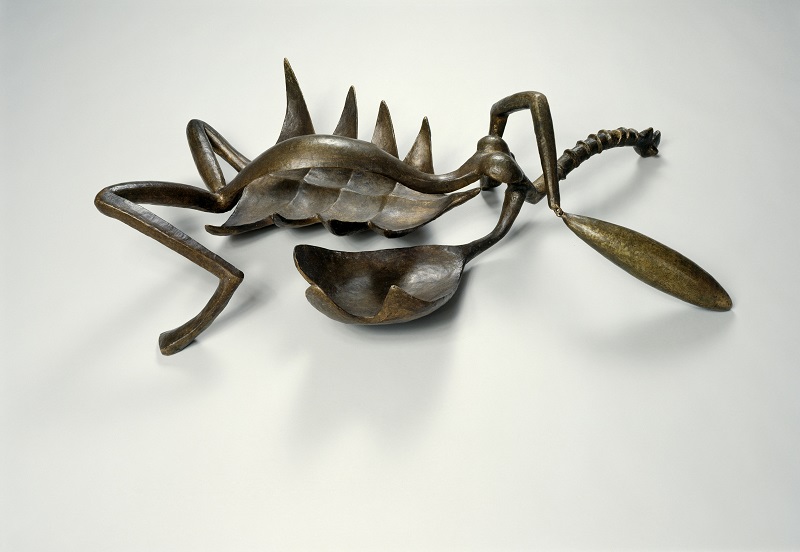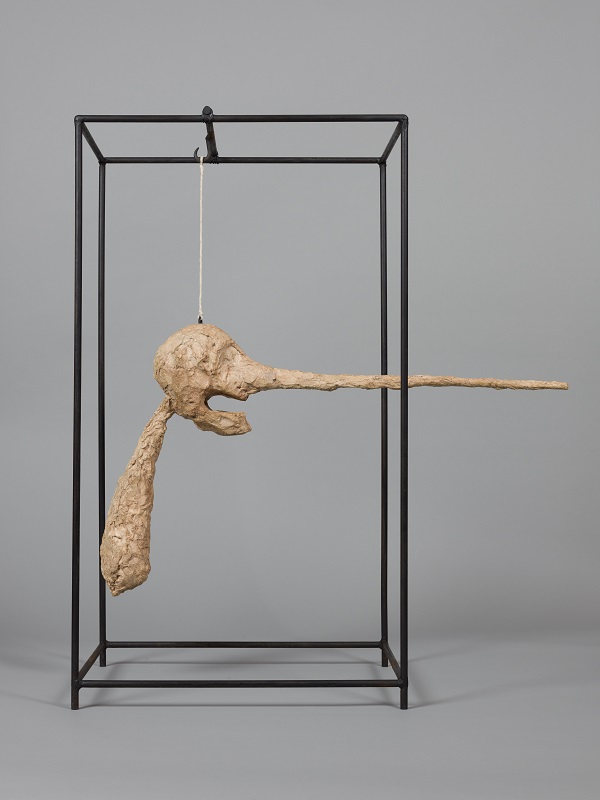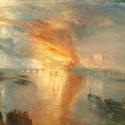Chain-smoking and charismatic, the painter, sculptor, draughtsman and printmaker Alberto Giacometti (1901-1966) lived much of his life in Paris from his arrival there in his twenties. He was just in time for post-war cubism and pre-war surrealism, the energetic noisiness of the avant garde. And although he was almost always a realist, it was absolutely on his own hard-won terms, leading to his characteristically elongated human figures, based always on unbelievably extended sittings (even when figures were standing) of his nearest, close friends, family, his wife and his mistress.
He was an obsessive and compulsive artist who lived to work. He never forgot his roots, born into a close-knit Swiss-Italian family of artists. In the 1930s he spent several years living with his mother after the death of his father, and spent the war years in Geneva. His brother Diego was not only one of his inner group of models but they collaborated on the designs of decorative functional objects (Diego’s tables, chairs, chandeliers were to become a feature of Paris’s Picasso Museum).
Perhaps this close and loving family ensured the extraordinary humanity of his work. Even his surreal abstract sculptures like the very famous Woman with her Throat Cut, 1932 (pictured below), well-displayed in a gallery of their own at Tate Modern's new retrospective, overtly explore human emotion from violence to affection. He was indeed in thrall to that most profound of artistic problems: how to describe people, in pencil, in paint, in plaster, clay and eventually bronze when increasing success enabled his galleries to support extensive and expensive casting. The viewer feels as though let into a secret – many secrets – of the relationships between the artist’s gaze and his subject, so that the viewer apprehends the "real" selves of these observed living creatures – including a wonderfully vital emaciated dog – on both emotional and physical levels.
He was indeed in thrall to that most profound of artistic problems: how to describe people, in pencil, in paint, in plaster, clay and eventually bronze when increasing success enabled his galleries to support extensive and expensive casting. The viewer feels as though let into a secret – many secrets – of the relationships between the artist’s gaze and his subject, so that the viewer apprehends the "real" selves of these observed living creatures – including a wonderfully vital emaciated dog – on both emotional and physical levels.
The emphasis of this big exhibition (over 250 sculptures, paintings, drawings, prints, documents), is actually on the hand-done, particularly the plasters and carvings. Working in a tiny crowded studio mostly with just a few favoured models – his brother Diego, his wife Annette, towards his final years his mistress Caroline – his subject, portentous as it might sound, was the human condition, or rather, how someone looked close up, far away, coming towards you, going away, or just quietly being with you.
 His intense commitment went through several phases; a superb draughtsman, as naturalistic as he wished to be, a modeller in plaster and clay, and a painter whose subjects are caught in webs of lines which dissolve and are absorbed into likeness.
His intense commitment went through several phases; a superb draughtsman, as naturalistic as he wished to be, a modeller in plaster and clay, and a painter whose subjects are caught in webs of lines which dissolve and are absorbed into likeness.
This exemplary exhibition opens with a coup de théâtre, an array of portrait heads, dating from 1917 to 1965, the year before the artist's death. Some jokey and lighthearted, some incisive, some conventional, showing his gifts and imagination in full array, some in the characteristic late style of attenuated and painfully felt renderings - it stops you in your tracks. The display is paradoxical in the sense that various styles are on show yet they are also demonstrably from the same hand.
The following galleries are arranged as chapters of his journey, cubism to surrealism to his several decades of the figures and portraits for which he is best known. The intensity of his most characteristic work is palpable but there is also humour: The Nose, 1947 (pictured above right), is almost like a hilarious illustration of a facial feature that takes on a life of its own, somewhere between Pinocchio and Shostakovich’s opera The Nose. There is also ethnographic, primitive and Egyptian material to show his inspirations from antiquity and the non-western world. Spoon Woman, 1927, hints at the semi-abstract representation so paramount in so-called primitive and ancient art, and is almost Cycladic in feeling.
 Working from the life he attempted to capture the sense of people walking, and there are several sculptures of small groups on platforms. Alexander Pope’s famous phrase of the 1730s, that the proper study of mankind is man, is a perfect fit for Giacometti, and is borne out in the current anthology. The unprecedented collection of original work in plaster and even clay makes the spectator feel close to the hand of the artist, as he takes a lump of stuff and fashions it into art, directly, without the precious overtones of bronze and the technological skills of the casting process. There are bronzes too so we can compare and contrast the importance of materials.
Working from the life he attempted to capture the sense of people walking, and there are several sculptures of small groups on platforms. Alexander Pope’s famous phrase of the 1730s, that the proper study of mankind is man, is a perfect fit for Giacometti, and is borne out in the current anthology. The unprecedented collection of original work in plaster and even clay makes the spectator feel close to the hand of the artist, as he takes a lump of stuff and fashions it into art, directly, without the precious overtones of bronze and the technological skills of the casting process. There are bronzes too so we can compare and contrast the importance of materials.
There are other scoops too in the show: eight of the nine surviving plasters of a sequence of standing women, based on his wife Annette. The Women of Venice, painstakingly restored over the past year, are here seen together for the first time.
Giacometti spent most of his working life in his tiny Paris studio, perhaps 15 foot by 15 foot, jammed with his art. Both the studio and his ruggedly handsome appearance were catnip to some of the best contemporary photographers. From the 1920s on he knew the people who were the essential avant-garde: in the 1950s Jean Genet sat for him and wrote about him and he designed the set for Samuel Beckett’s Waiting for Godot in 1961. It is a standard interpretation, particularly of the post-war work, to identify Giacometti with the Age of Anxiety, the times of uncertainty, fear and concern for the future. But seeing this show what came across for this viewer at least was that the artist was absolutely fixated on the impenetrable mystery of people, of our inability to know one another, let alone oneself, and his heroic and unceasing efforts to express this.
His unswerving commitment to finding the essentials of appearance is well served in this ample show: he was equally absorbed with seeing people from a far distance, making for years tiny figures in an attempt to pin down the strangeness of seeing a human figure from afar. Success came when he was in his forties, with exhibitions, publications, and a biography. He appeared at the French pavilion at the Venice Biennale in 1956, and had his own special exhibition at the 1962 Biennale, yet the austerity of his lifestyle did not waver. But beyond all that, as this exhibition shows, Giacometti achieved something very rare: the creation of art that has changed and altered the way we view the representation of people, and for himself a life that allowed him to work – although he was never satisfied – exclusively and only at what he wanted to do, making art.
- Alberto Giacometti 1901-1966 at Tate Modern until 10 September
- Read more visual arts reviews on theartsdesk










![SEX MONEY RACE RELIGION [2016] by Gilbert and George. Installation shot of Gilbert & George 21ST CENTURY PICTURES Hayward Gallery](/sites/default/files/styles/thumbnail_125_x_125_/public/mastimages/Gilbert%20%26%20George_%2021ST%20CENTURY%20PICTURES.%20SEX%20MONEY%20RACE%20RELIGION%20%5B2016%5D.%20Photo_%20Mark%20Blower.%20Courtesy%20of%20the%20Gilbert%20%26%20George%20and%20the%20Hayward%20Gallery._0.jpg?itok=3oW-Y84i)




Add comment